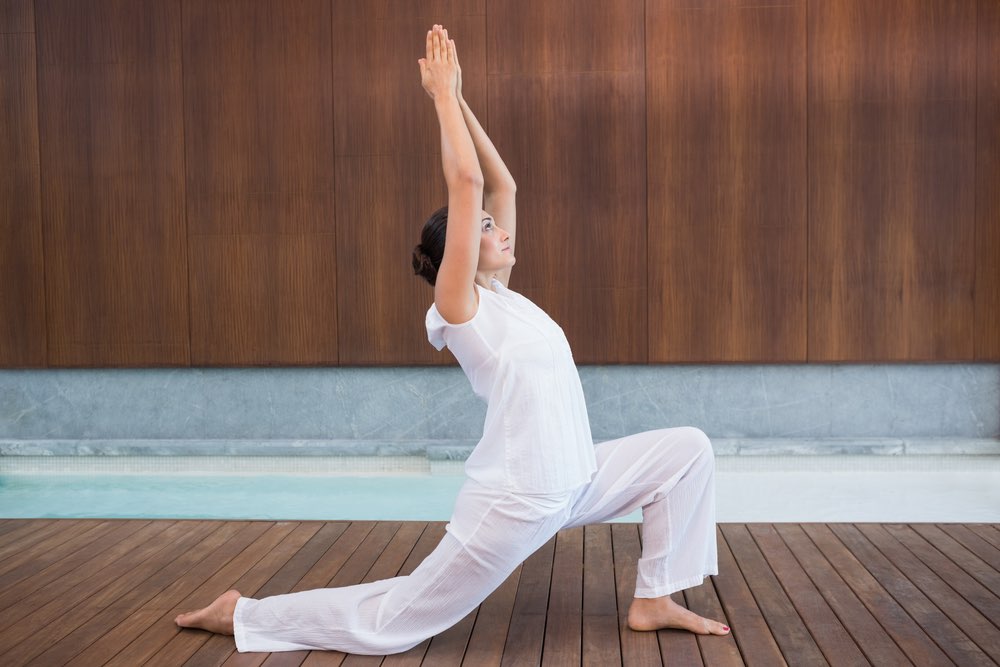

But, if you think tai chi is something best left to Mr. Miyaki and the Karate Kid, it’s time get clued up.
The ancient Chinese practice combines slow, deliberate movements, breathing exercises and meditation. Unlike other exercise routines, tai chi was not designed to get your heart pumping or burn calories. Instead, it was created to aid circulation, balance, and alignment. However, its main focus is to restore your energy, known as chi or qi (pronounced "chee").
Tai chi helps qi flow smoothly throughout the body. It encourages total harmony of the inner and outer self by integrating mind and body. The Low-impact moving meditations take place either standing or balancing and although tai chi is an excellent activity for beginners and people with health conditions, even seasoned athletes benefit from it since growing evidence suggests that this mind-body practice helps treat or prevent many health problems.

Photo Credit: Depositphotos
Balance decreases with age, as does the fragility of our bones, meaning falls are much more dangerous the older we get. Tai chi improves balance and stability by training sensory neurons in the inner ear and stretch receptors in the muscles and ligaments, thus reducing the risk of falls.
There is also evidence that tai chi improves balance in people with mid-to-moderate Parkinson’s disease. Additional benefits included improved functional capacity and reduced falls.
Tai chi can strengthen our muscles when practiced regularly, which, in turn, keeps our joints stable and protected. Strong muscles also reduce the pain of osteoarthritis for sufferers.
Research at Harvard Medical School found that patients who had chronic heart failure and began regularly practicing tai chi experienced a better quality of life, increased exercise capacity and that they slept better.
Adding a little tai chi to your life could also lower your risk of developing dementia or Alzheimer’s disease, suggests a new study from the Journal of Alzheimer’s Disease. The study showed that tai chi improved brain volume, an important part of cognition since gray matter typically shrinks with age. Researchers suggest that the high level of concentration needed for the tai chi movements could be to thank.
Tai chi improves our flexibility and range of motion, making us more functional. Being flexible keeps our entire body healthy and allows us to be more active for longer.
Tai chi also improves posture, which is an important component of health (yeah, you heard us right). Developing good posture will result in less wear and tear on joint muscles and also aids breathing, because when we are sitting upright, there is more space for our lung to expand, improving breathing capacity.
The Chinese believe the mind is the most important aspect of health since the mind controls the body. Well, lucky for you tai chi is one of the most powerful mind-body exercises around. Almost everyone who takes up tai chi notices improved relaxation and concentration. It also helps us cope with the fast-pace of modern-day life by forcing us to take the time to appreciate the tranquillity and nature around you.
Studies published by the National Centre for Biotechnology Information in the US suggest that tai chi may help improve some menopausal symptoms, such as the frequency and intensity of hot flashes, sleep and mood disturbances, stress, and muscle and joint pain.
1. Take a class. Tai chi classes are readily available and can be found at many community centers, hospitals and in corporate wellness programs.
2. Watch a DVD. Live classes are best, but DVDs can work too and means you can squeeze in a session after you’ve put the kids to bed, or before you head out to work!
3. Download an app. Yep, that’s right, there’s an app for tai chi, too, which gives you instructions and illustrations to help you learn or T’ai Chi Chih which includes 19 movements to balance and distribute your Chi.
Photo Credit: Depositphotos
